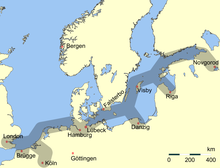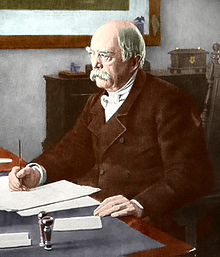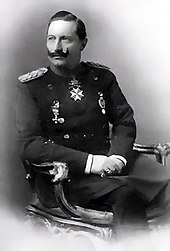# 25
Economic History of Germany
Germany before 1800 was heavily rural, with some urban trade centers. In the 19th century it began a stage of rapid economic growth and modernization, led by heavy industry.
By 1900 it had the largest economy in Europe, a factor that played a major role in its entry into World War I.
Hanseatic League
It was a business alliance of trading cities and their guilds that dominated trade along the coast of Northern Europe and flourished from the 1200 to 1500, and continued with lesser importance after that.
The chief cities were Cologne on the Rhine River, Hamburg and Bremen on the North Sea, and Lübeck on the Baltic.
The Hanseatic cities each had its own legal system and a degree of political autonomy.
Early Modern Era
Thirty Years War
The Thirty Years' War (1618–1648) was ruinous to the twenty million civilians and set back the economy for generations, as marauding armies burned and destroyed what they could not seize.
The fighting often was out of control, with marauding bands of hundreds or thousands of starving soldiers spreading plague, plunder, and murder.
The armies that were under control moved back and forth across the countryside year after year, levying heavy taxes on cities, and seizing the animals and food stocks of the peasants without payment.
The enormous social disruption over three decades caused a dramatic decline in population because of killings, disease, crop failures, declining birth rates and random destruction, and the out-migration of terrified people.
One estimate shows a 38% drop from 16 million people in 1618 to 10 million by 1650, while another shows "only" a 20% drop from 20 million to 16 million. The Altmark and Württemberg regions were especially hard hit. It took generations for Germany to fully recover.
Peasants and rural life
Across Germany and especially in the east, they were serfs who were bound prominently to parcels of land.
In most of Germany, farming was handled by tenant farmers who paid rents and obligatory services to the landlord, who was typically a nobleman.
Peasant leaders supervised the fields and ditches and grazing rights, maintained public order and morals, and supported a village court which handled minor offenses.
Inside the family the patriarch made all the decisions, and tried to arrange advantageous marriages for his children.
Much of the villages' communal life centered around church services and holy days.
In Prussia, the peasants drew lots to choose conscripts required by the army. The noblemen handled external relationships and politics for the villages under their control, and were not typically involved in daily activities or decisions.
Industrial Revolution
By midcentury, however, the German states were catching up, and by 1900 Germany was a world leader in industrialization, along with Britain and the United States.
In 1800, Germany's social structure was poorly suited to any kind of social or industrial development.
Domination by France during the era of the French Revolution (1790s to 1815), produced important institutional reforms, including the abolition of feudal restrictions on the sale of large landed estates, the reduction of the power of the guilds in the cities, and the introduction of a new, more efficient commercial law.
Nevertheless, traditionalism remained strong in most of Germany.
Until midcentury, the guilds, the landed aristocracy, the churches, and the government bureaucracies had so many rules and restrictions that entrepreneurship was held in low esteem, and given little opportunity to develop.
From the 1830s and 1840s, Prussia, Saxony, and other states reorganized agriculture, introducing sugar beets, turnips, and potatoes, yielding a higher level of food production that enabled a surplus rural population to move to industrial areas.
The beginnings of the industrial revolution in Germany came in the textile industry, and was facilitated by eliminating tariff barriers through the Zollverein, starting in 1834.
The takeoff stage of economic development came with the railroad revolution in the 1840s, which opened up new markets for local products, created a pool of middle manager, increased the demand for engineers, architects and skilled machinists and stimulated investments in coal and iron.
The political decisions about the economy of Prussia (and after 1871 all Germany) were largely controlled by a coalition of "rye and iron", that is the Junker landowners of the east and the heavy industry of the west.
Regions
They had vast agricultural tracts from Schleswig-Holstein in the west through Prussia in the east.
They also had coal and iron in the Ruhr Valley.
Through the practice of primogeniture, widely followed in northern Germany, large estates and fortunes grew. So did close relations between their owners and local as well as national governments.
The south German states were relatively poor in natural resources and those Germans therefore engaged more often in small economic enterprises.
They also had no primogeniture rule but subdivided the land among several offspring, leading those offspring to remain in their native towns but not fully able to support themselves from their small parcels of land.
The south German states, therefore, fostered cottage industries, crafts, and a more independent and self-reliant spirit less closely linked to the government.
Coal
In 1782 the Krupp family began operations near Essen.
After 1815 entrepreneurs in the Ruhr Area, which then became part of Prussia took advantage of the tariff zone (Zollverein) to open new mines and associated iron smelters.
New railroads were built by British engineers around 1850.
Numerous small industrial centres sprang up, focused on ironworks, using local coal.
The iron and steel works typically bought mines, and erected coking ovens to supply their own requirements in coke and gas.
These integrated coal-iron firms ("Huettenzechen") became numerous after 1854; after 1900 they became mixed firms called "Konzern."
The average output of a mine in 1850 was about 8,500 short tons; its employment about 64.
By 1900, the average mine's output had risen to 280,000 and the employment to about 1,400.
Total Ruhr coal output rose from 2.0 million short tons in 1850 to 22 in 1880, 60 in 1900, and 114 in 1913, on the verge of war.
The miners in the Ruhr region were divided by ethnicity (with Germans and Poles) and religion (Protestants and Catholics).
Mobility in and out of the mining camps to nearby industrial areas was high. The miners split into several unions, with an affiliation to a political party. As a result, the socialist union (affiliated with the Social Democratic Party) competed with Catholic and Communist unions.
Banks and Cartels
Different banks formed cartels in different industries.
Cartel contracts were accepted as legal and binding by German courts although they were held to be illegal in Britain and the United States.
The process of cartelization began slowly, but the cartel movement took hold after 1873 in the economic depression that followed the postunification speculative bubble.
It began in heavy industry and spread throughout other industries.
By 1900 there were 275 cartels in operation; by 1908, over 500.
By some estimates, different cartel arrangements may have numbered in the thousands at different times, but many German companies stayed outside the cartels because they did not welcome the restrictions that membership imposed.
The government played a powerful role in the industrialization of the German Empire founded by Otto von Bismarck in 1871 during a period known as the Second Industrial Revolution.
It supported not only heavy industry but also crafts and trades because it wanted to maintain prosperity in all parts of the empire.
Even where the national government did not act, the highly autonomous regional and local governments supported their own industries.
Each state tried to be as self-sufficient as possible.
Despite the several ups and downs of prosperity and depression that marked the first decades of the German Empire, the ultimate wealth of the empire proved immense.
German aristocrats, landowners, bankers, and producers created what might be termed the first German economic miracle, the turn-of-the-century surge in German industry and commerce during which bankers, industrialists, mercantilists, the military, and the monarchy joined forces.
Class and the Welfare State
The Association of German Women's Organizations (BDF) was established in 1894 to encompass the proliferating women's organizations that had sprung up since the 1860s.
From the beginning the BDF was a bourgeois organization, its members working toward equality with men in such areas as education, financial opportunities, and political life.
Working-class women were not welcome; they were organized by the Socialists.
Bismarck built on a tradition of welfare programs in Prussia and Saxony that began as early as in the 1840s.
In the 1880s, he introduced old age pensions, accident insurance, medical care and unemployment insurance that formed the basis of the modern European welfare state.
His paternalistic programs won the support of German industry because its goals were to win the support of the working classes for the Empire and reduce the outflow of immigrants to America, where wages were higher, but welfare did not exist.
Bismarck further won the support of both industry and skilled workers by his high tariff policies, which protected profits and wages from American competition, although they alienated the liberal intellectuals who wanted free trade.
Railways
However, by the 1840s, trunk lines did link the major cities; each German state was responsible for the lines within its own borders.
Economist Friedrich List summed up the advantages to be derived from the development of the railway system in 1841:
- as a means of national defence, it facilitates the concentration, distribution and direction of the army.
- It is a means to the improvement of the culture of the nation…. It brings talent, knowledge and skill of every kind readily to market.
- It secures the community against dearth and famine, and against excessive fluctuation in the prices of the necessaries of life.
- It promotes the spirit of the nation, as it has a tendency to destroy the Philistine spirit arising from isolation and provincial prejudice and vanity. It binds nations by ligaments, and promotes an interchange of food and of commodities, thus making it feel to be a unit. The iron rails become a nerve system, which, on the one hand, strengthens public opinion, and, on the other hand, strengthens the power of the state for police and governmental purposes.
In many cities, the new railway shops were the centres of technological awareness and training, so that by 1850, Germany was self-sufficient in meeting the demands of railroad construction, and the railways were a major impetus for the growth of the new steel industry.
Observers found that even as late as 1890, their engineering was inferior to Britain’s.
However, German unification in 1870 stimulated consolidation, nationalisation into state-owned companies, and further rapid growth.
Unlike the situation in France, the goal was support of industrialisation, and so heavy lines crisscrossed the Ruhr and other industrial districts, and provided good connections to the major ports of Hamburg and Bremen.
By 1880, Germany had 9,400 locomotives pulling 43,000 passengers and 30,000 tons of freight, and pulled ahead of France.
Agriculture
Farmers quickly abandoned traditional, inefficient practices for modern new methods, including use of new fertilizers and new tools.
The knowledge and tools gained from the intensive farming of sugar and other root crops made Germany the most efficient agricultural producer in Europe by 1914.
Even so, farms were small in size, and women did much of the field work. An unintended consequence was the increased dependence on migratory, especially foreign, labor.
Chemicals
The economy continued to industrialize and urbanize, with heavy industry (coal and steel especially) becoming important in the Ruhr, and manufacturing growing in the cities, the Ruhr, and Silesia.
Based on its leadership in chemical research in the universities and industrial laboratories, Germany became dominant in the world's chemical industry in the late 19th century.
Big businesses such as BASF and Bayer led the way in their production and distribution of artificial dyes and pharmaceuticals during the Wilhelmine era, leading to the German monopolisation of the global chemicals market at 90 percent of the entire share of international volumes of trade in chemical products by 1914.
Steel
The leading firm was "Friedrich Krupp AG Hoesch-Krupp" run by the Krupp family.
The "German Steel Federation" was established in 1874.
20th century
By 1913, American and German exports dominated the world steel market, as Britain slipped to third place.
In machinery, iron and steel and other industries, German firms avoided cut-throat competition and instead relied on trade associations. '
Germany was a world leader because of its prevailing "corporatist mentality", its strong bureaucratic tradition, and the encouragement of the government.
These associations regulated competition and allowed small firms to function in the shadow of much larger companies.













